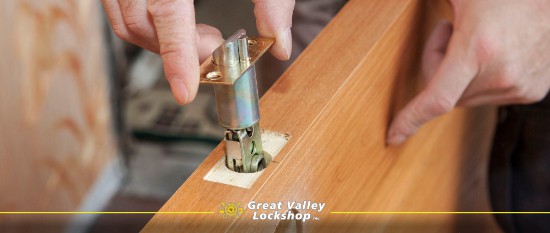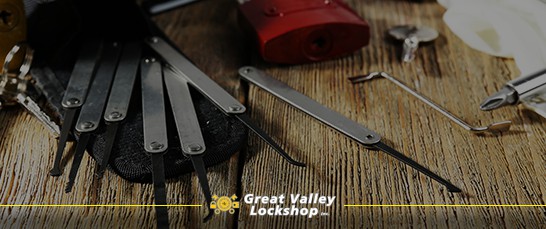
How Do Locksmiths Make Keys Without an Original Key?
Today we’re going to give away some trade secrets. We’re going to tell you how locksmiths make a new key when the original key has gone missing or was stolen.
It’s possible to recuperate function of an existing lock even if the key is not available. One technique that locksmiths use to do this is called “impressioning.”
What Types of Locks Can We Make a New Key for Using Impressioning?
This will work on many different styles of locks, but the hardest thing that you’re going to have to do is figure out what key blank the lock takes. When you have a key blank, it’s easy because you’re making a duplicate, so you have the blank in front of you and can copy it.
How Much Does It Cost to Have a Locksmith Make a New Key?
If you want the locksmith just to make the key for you using this technique, typical average pricing in the country $30 to $35 plus the key blanks to do an impressioning.
DIY: Can I Make a New Key Myself?
Impressioning is an advanced technique. That means it does take some tools and practice, but if you’re interested in doing it yourself it can be a good DIY project. But if you’re going to try it on your own, you’re going to need the right blank. And a professional locksmith is the best person to help you identify the right key blank.
We’re going to describe the process step by step, so whether you’re just curious about how it’s done or you’ve got a utility box that you don’t have a key for, or toolbox, or padlock, and you want to learn how to make a key for it. It just takes time and patience, like any other skill that you learn. Follow along.
What Materials Do You Need for Making the Key?
When you don’t happen to blank, you must first determine what type of key blank the lock requires. This step is quite difficult to do yourself, because there are thousands of different key blanks. So, if you’re interested in trying this and learning, take that lock into a locksmith and he/she will get you the right key blank for the lock.
Don’t just purchase one. You will need at least two to complete the job, plus extra key blanks in case of mistakes. You will need extra if you’re going to try this on your own.
Steps for Making a Key Without the Original
- Ask a locksmith to provide a few key blanks. Once you’ve found the key blank it still will not turn in the lock.
- Then, you will need to file that key blank into a sharp point, kind of like a blade, and we do that using a Pippin file. You will need to file off the sides, rather than going right directly on top of the key. This is because you’re trying to get the blank into a thin point. Work slowly across it, until it’s reduced down to a sharp blade like you see here.
- Once you have that key filed down, use a pair of vice grips to hold the blank firmly. Use a lighter and hold the flame below the key for a few seconds. The smoke left on the blank will make it easier to see the transfer marks made by the lock.
- Using the vice grips, insert the sharpened key blank into the lock and start twisting the key. You want the wafers or the pins in the lock to actually mark the blank. This will make it possible to see where you will need to make cuts in order to get the key to turn freely. Use any technique you can to do this; twist it back and forth, shake it up and down, do anything you can to get those marks transferred onto the key.
- Following the little marks impressioned onto the key blanks, you will next need to file the key down. At first, you will need to just score it slightly with your file and shave it down a little bit at a time.
- Next, put the key blank back in the lock and repeat the process. This process is progressive, starting with little depths and grooves; making a new set of impressions to see if where you need to continue the filing.
- Continue taking impressions and filing the blank down until it turns inside the lock. Eventually, when you return the key to to the lock for a new set of markings, you’ll find that while twisting and turning, the key will actually twist over.
- Allow the key to spin in the cylinder, then inspect it for a new set of markings. Fine tune the key by filing it according to these new impression markings.
- Repeat as needed. Once that key is opening the lock easily, you’ve got the cuts needed to make a fresh key for that lock. But, you can’t stop here. You don’t want to use this key because it’s been filed down, is thinner and weaker than it should be.
- Now that you’ve got the correct key markings, take it back to a locksmith–or if you’ve got the tools do it yourself. At this point, you will need to make a copy, or have a copy made, using the impression and on a brand key blank so that you’ve got a good, strong key that works in the lock.
That’s it! That’s how we make a new key if the current key is not available. For more tips and tricks of the trade, follow GVLock on our social media profiles.








